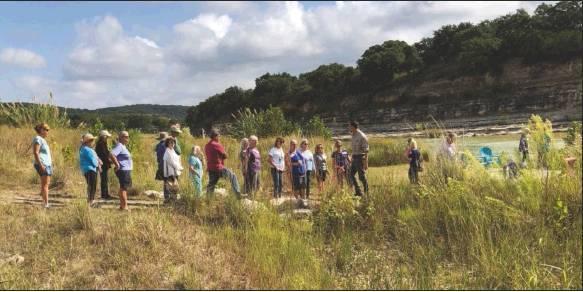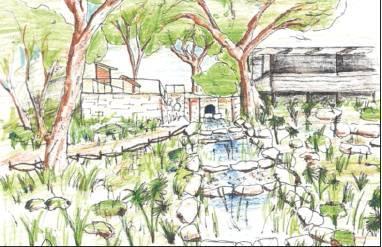Bioretention - A Path to Cleaner Waterways Through Stormwater Management
OPINION-EDUCATION
We all want to keep pollutants out of Wimberley Valley’s creeks and the Blanco River. Pollutants often get into our streams when stormwater runs off picking up whatever is on the surface along the way. That includes oil and grease from our roadways, pesticides and fertilizer from our lawns/gardens, waste from animals, both wild and domestic, as well as trash, loose soil and other surface contaminants.
Many Low Impact Development (LID)/Green Infrastructure stormwater management practices involve the concept of bioretention. The term bioretention refers to the use of natural physical, chemical, and biological processes to ensure the rain that finds its way into our waterways is cleaner. The first step in a bioretention system is to capture as much stormwater as possible providing time for the water to soak in rather than run-off. One technique, raingardens, is gaining popularity as area homeowners appreciate the benefits of a more robust landscape supported by naturally occurring water and incorporate them into landscaping plans. Another bioretention technique involves bioswales - think industrial size raingardens. Developers use these larger basins instead of traditional techniques for mitigating increased run-off from rooftops and/or parking lots (i.e., impervious cover). Area landowners with serious run-off problems can also benefit from including bioswales in their remediation plans as was done at the Texas Parks and Wildlife demonstration site at Jackaroo.
Don’t worry. Mosquito control is built into the concept of bioretention. Water retention is only a temporary measure. Most implementation guidelines require surface ponding of less than 48 hours - not enough time for mosquitos to breed. A simple test before a project starts can determine whether existing soil is permeable enough to accomplish this objective. First a hole 12 inches deep or so is dug, filled with water, and allowed to drain. After the surrounding soil is saturated, the hole is refilled and the rate at which the water drains is measured. The goal is at least half an inch an hour. If this goal is not met, there are techniques for improving infiltration such as adding/amending soil and/or incorporating buried perforated pipe to direct the excess, now cleaner water to existing storm drains.
The real magic happens after the polluted water soaks in. Native vegetation that tolerates both moist and dry condition not only improves infiltration, but also plays a key role in the complex physical, biological and chemical processes that result in the removal of contaminants from stormwater. For example, nitrogen contained in everyday garden/lawn products that gets into our waterways can lead to algae blooms - both unsightly and lethal to fish. Bioretention systems remove nitrogen in several ways. First, nitrogen, essential for plant growth, is taken up by native plants meaning the excess nitrogen is used up before it reaches our streams. Soluble nitrogen is also removed when water is stored underground where anoxic
(i.e., without oxygen) conditions trigger microbially-mediated denitrification processes. Finally, particulate bound nitrogen is removed through sedimentation.
While capturing as much stormwater as possible as close to the source as possible is ideal, capture anywhere for the purpose of bioretention, even at the other end of a traditional drainage system, contributes to healthier waterways. Did you notice that the recently adopted Cypress Creek Nature Preserve Master Plan recommending the replacement of unhindered storm drain outflows with vegetated terraces? Think about drainage on your property and ask yourself “How can I keep this free water on my land longer?” And let’s all insist area developers avoid building ugly detention ponds and instead adopt Green Infrastructure Best Management Practices (BMP) that enhance our community’s aesthetics and better protect our waterways.
Christine Middleton is a member of the Citizens Alliance for Responsible Development Steering Committee. Hays CARD encourages everyone developers and homeowners alike incorporate bioretention and other Green Infrastructure practices into their plans. For information on CARD, visit www.hayscard.org.



